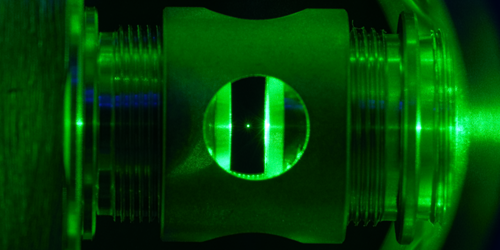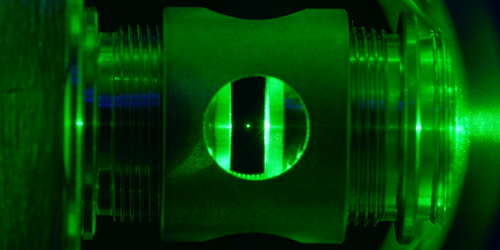Levitated Nanoparticle Goes Quantum
Picture a marble rolling around inside a bowl. The motion of the marble represents its center-of-mass temperature, a quantity distinct from the object’s physical temperature. Now replace the marble with a levitated nanosphere and the bowl with an optical trap, and you have the experiment used by Felix Tebbenjohanns and colleagues at the Swiss Federal Institute of Technology (ETH), Zurich, to reduce a levitated nanoparticle’s center-of-mass temperature to close to its quantum ground state. The experimental signature showing that the nanosphere had entered the quantum regime had, until now, been seen only in mechanically clamped systems coupled to optical cavities.
To cool their nanoparticle—a charged, 136 nm silica sphere—the team trapped it in the bowl-like potential of a focused laser beam. The nanoparticle’s center-of-mass motion as it “rolled” around in the laser field caused a frequency shift in the photons it backscattered. The researchers used this information to control a voltage that they applied across the trap. This voltage created electrostatic forces that damped the nanoparticle’s motion in real time.
Studying the frequencies of the backscattered photons, the researchers found that photons shifted to lower frequencies outnumbered those shifted to higher frequencies. This asymmetry arose because fewer scattering events transferred energy from the nanoparticle to the reflected photons. The comparative inability of the nanoparticle to emit energy indicates that it had been cooled nearly to its ground state.
The achievement opens a new area of research that the team calls “levitated quantum optomechanics.” By going even deeper into the quantum regime and extending experiments to larger objects, the team hopes to test the limits of quantum mechanics and investigate the mechanisms that make the classical world emerge from the quantum dynamics of its microscopic constituents.
This research is published in Physical Review Letters.
–Marric Stephens
Marric Stephens is a freelance science writer based in Bristol, UK.





